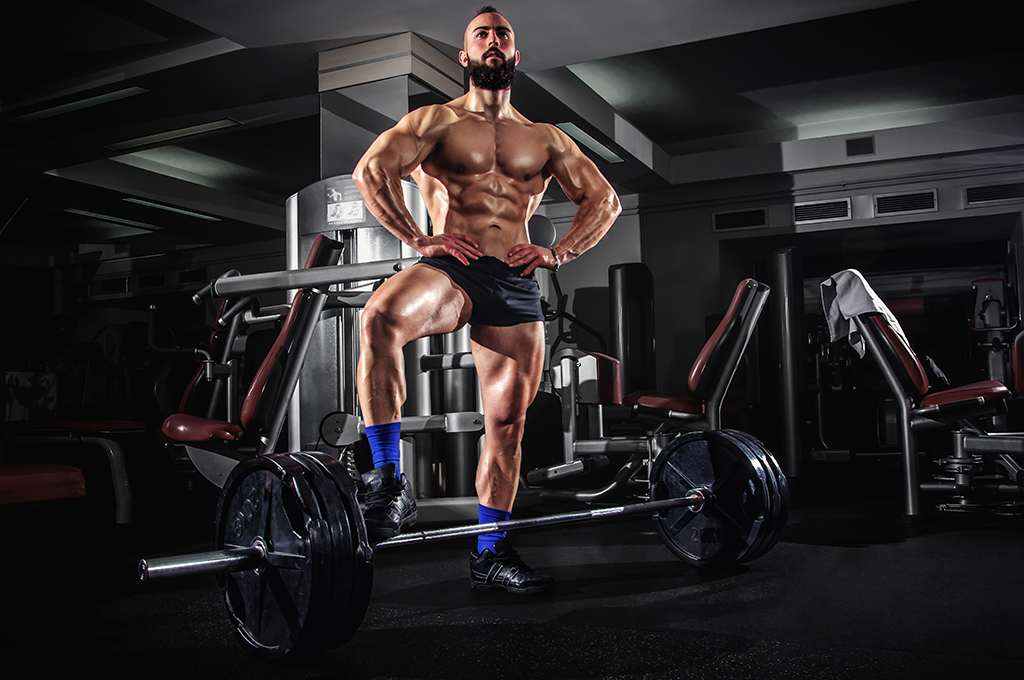
Goals. We all have them. Some are clearly stated, and some are vague. When we say we want to be CEO of a Fortune 500 company, while marrying a supermodel and packing 220 pounds of lean muscle, we are being very specific and clear with our goals. On the other hands, when we say "I want to be successful", we are being rather vague. The more clear a goal is defined, the more easily we are able to identify the things we'd need to do to achieve this goal. Identifying the required tasks for reaching our goals is a key part of reaching any goals. If you can clearly define your goal with very exact specifics, you are much more likely to use your resources wisely and choose the right actions each day, until you achieve these clear and lofty goals.
Many lifters in the gym have vague explanations for their strength goals. "I want to get strong" is about as vague as they come - and the results seen by lifters who subscribe to such a training goal are predictably low and unimpressive. They make gains if they keep showing up at the gym, but there is very little rhyme or reason to what they do.
The next level of lifters focus primarily upon numbers. "I want to bench 300, squat 400, and deadlift 500 pounds". Yes, we have all heard these goals before. And they're very nice goals. They're in the middle of the road in terms of successful strength achievement management. But you can do better. Are you ready to learn how to define specific strength goals, and learn how to achieve them? First, we'll need to look at the 3 types of strength.
Core Strength
The first, and most important type of strength, is known as core strength. As an athlete, you are probably already very much aware of what core strength is, and you probably target it on a regular basis. Your core is the part of the body which connects, or ties together, your lower and upper bodies. They are strong separately, but very strong when they are able to work together. Just as Peyton Manning couldn't throw a football 60 yards while seated (without the use of his legs for that force and strength), you are much more powerful when you have a strong core which is working to unite your upper and lower body strength.
Another reason to focus upon core strength is, well, because it sure isn't fun to be injured! Athletes tend to lean back in a position of spinal extension, when their core isn't feeling strong. This can lead to nagging small injuries which force performance to suffer in many workout areas. Also, if you want your body to perform at its peak capacity, having a strong core is imperative. You'll be the strongest you can possibly be in all movements if your core is fully developed.
What kind of movements should you be using to target core strength? You're probably already using many of them! Loaded push ups, deadlifts, front squats, farmer's carries, dumbbell rows, and single arm DB bench presses are movements which really recruit the core and will help you to develop maximum core strength.

Maximal Strength
You may have never heard of maximal strength before, but that doesn't mean you don't use it on a regular basis! The strength and performance capability of your nervous system is called into play here. Your muscles fire in a certain order when you're moving to extremely low repetition exercises in the 1,2,3,4,5 repetition per set ranges. As a high caliber athlete, you are going to want to train your muscle fibers to fire in succession at just the right time in order to see optimal results. Speed and power development can be achieved through the use of exercises such as chin-ups, squats, bench presses, and deadlifts (trap bar, convention, or the sumo style). Training very hard with low repetitions and very high weights activated maximal strength, and is something you should be focusing upon on a regular basis. You'll see improvements not only in your brutal strength levels, but also in your physique appearance as well… for the better!
Explosive Strength
If you're a young athlete, you probably already feel that most strength and speed training comes easily. Well, as you age, that is going to change. The first thing to "go" as you start getting older is your speed. You'll still be strong as an ox, but you'll just start to be a bit slower, much like an ox. As a result, your power capability is going to diminish. There are two kinds of "power" when it comes to explosive strength. Strength-speed is your ability to move heavy things very quickly. Speed-strength is the moving of lighter items at explosive speeds. Both are affected by age, as your muscle fibers begin to deteriorate. Power is defined as strength times speed, and as your speed decreases, so will your power. You can help to limit this by training for explosive strength, in order to diminish as much of this depreciation as possible. Medicine ball training, fast ball throws, and any kind of FAST lifting will help to keep your explosive strength firing. And don't forget to sprint!


